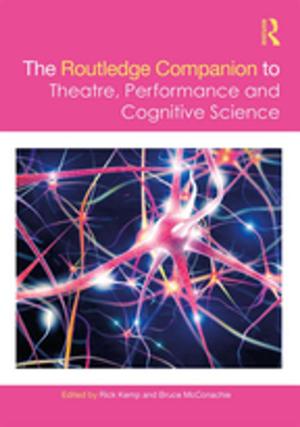Intertwined. How to induce neuroplasticity.
A new approach to rehabilitating dystonias.
Nonfiction, Sports, Individual Sports, Training, Health & Well Being, Psychology, Neuropsychology, Entertainment, Performing Arts| Author: | Joaquin Farias | ISBN: | 9788461551248 |
| Publisher: | Galene editions | Publication: | March 27, 2012 |
| Imprint: | Galene editions | Language: | English |
| Author: | Joaquin Farias |
| ISBN: | 9788461551248 |
| Publisher: | Galene editions |
| Publication: | March 27, 2012 |
| Imprint: | Galene editions |
| Language: | English |
What do these have in common? A soprano who can’t sing from a printed score, a violoncellist who can’t keep from crying while playing, a woman who can walk backwards but not forwards, a man who can’t move his hands unless he’s playing the violin, a priest who can’t say the words “you” or “we”, eyes that close, a dancer’s legs that refuse to dance, and a magician’s hands that move on their own.
In this book, Dr. Farias shows how patients affected by a wide variety of disorders like writer's cramp, task-specific tremors, focal dystonia or perceptive illusions are trapped within the functioning of their own brains, which is producing illusions, leading them to display rigid behaviors and repetitive movements and thoughts.
Every illusion has some bug or incoherency. When the patients are conscious of the errors in their illusions, the illusion breaks inducing a neuroplastic change that allows restored functional movement.
By the way of insight, attention, awareness, imagination, movement and persistence, the patients whose cases are described in this book were able to break the illusion that was shackling them and reconstruct a new, accurate perception and proper function.
Intertwined . How to induce neuroplasticity, defines how to treat these disorders through a different lens, considering patients as individuals with distinct background experiences and special needs.
Intertwined is full of exercises, fMRI images and statistics that show how imagination, feelings, memories and movements can actually change the way our brain functions.
This book sets a new and hopeful paradigm in the study of some disorders, which have, until now, been considered intractable disorders.
This is the book that all patients must read and all practitioners should have.
Are you living in a loop? It is time to break it.
What do these have in common? A soprano who can’t sing from a printed score, a violoncellist who can’t keep from crying while playing, a woman who can walk backwards but not forwards, a man who can’t move his hands unless he’s playing the violin, a priest who can’t say the words “you” or “we”, eyes that close, a dancer’s legs that refuse to dance, and a magician’s hands that move on their own.
In this book, Dr. Farias shows how patients affected by a wide variety of disorders like writer's cramp, task-specific tremors, focal dystonia or perceptive illusions are trapped within the functioning of their own brains, which is producing illusions, leading them to display rigid behaviors and repetitive movements and thoughts.
Every illusion has some bug or incoherency. When the patients are conscious of the errors in their illusions, the illusion breaks inducing a neuroplastic change that allows restored functional movement.
By the way of insight, attention, awareness, imagination, movement and persistence, the patients whose cases are described in this book were able to break the illusion that was shackling them and reconstruct a new, accurate perception and proper function.
Intertwined . How to induce neuroplasticity, defines how to treat these disorders through a different lens, considering patients as individuals with distinct background experiences and special needs.
Intertwined is full of exercises, fMRI images and statistics that show how imagination, feelings, memories and movements can actually change the way our brain functions.
This book sets a new and hopeful paradigm in the study of some disorders, which have, until now, been considered intractable disorders.
This is the book that all patients must read and all practitioners should have.
Are you living in a loop? It is time to break it.















